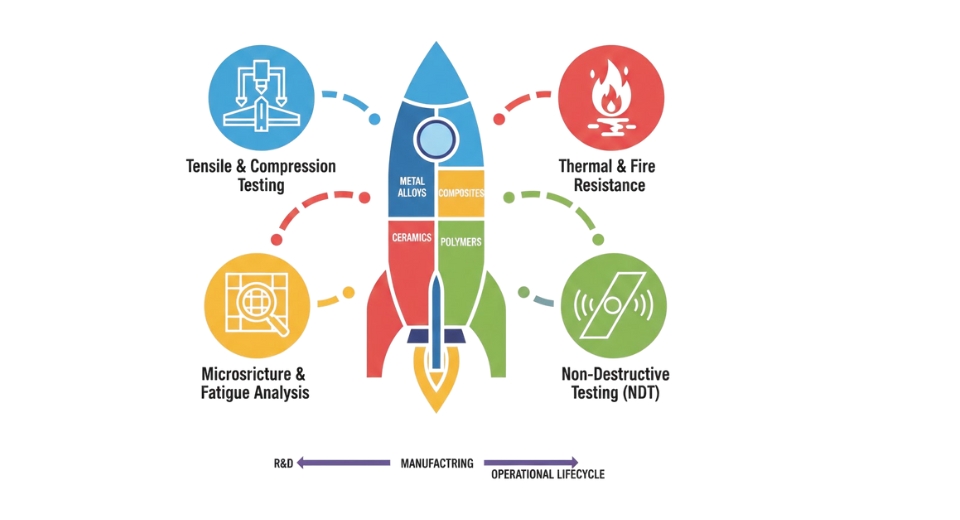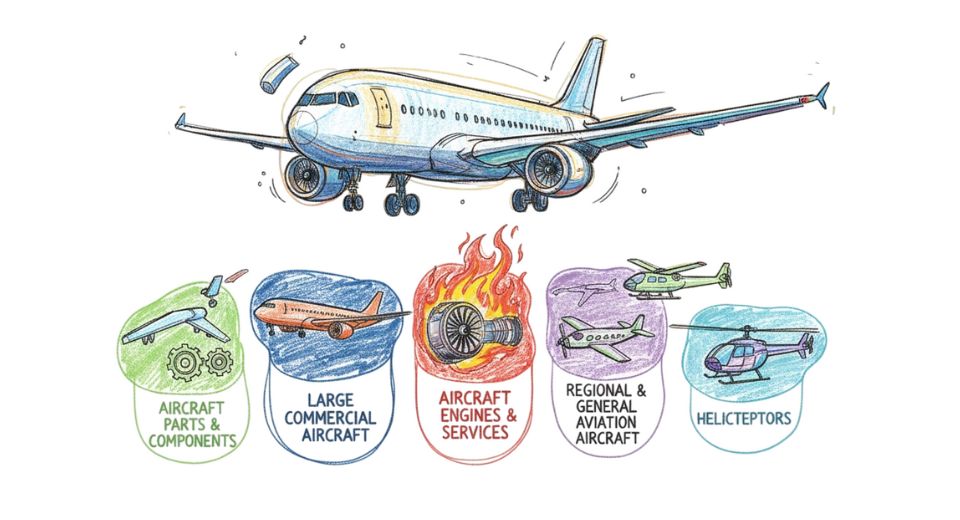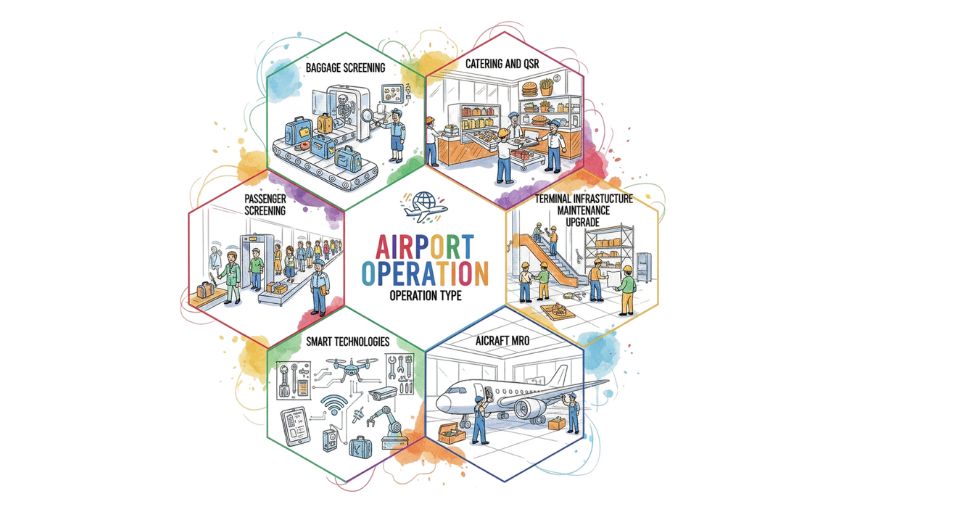MARKET OVERVIEW
The global air traffic management market will continue to mold the aviation sector in manners that reach beyond traditional parameters. As increasingly congested skies fill the horizon, the market will slowly transition from the older radar-based systems toward strongly integrated, digital platforms that will reshape how air traffic is tracked, controlled, and directed. This change will not merely be incremental updates; rather, it will be a more profound structural shift in how aviation uses safety, efficiency, and data. The effects of this market will extend far wider than the airports and skies, reaching into fields like telecommunications, cybersecurity, and even climatology.
Governing this leading edge will be the increased use of automation and AI-driven decision algorithms. Manual intervention will no longer be adequate to cope with the increasing complexity of air navigation demands. In the years ahead, there will be an increased emphasis on predictive traffic modeling, conflict resolution by automation, and digital communication channels between planes and airport control towers. These innovations will not only benefit commercial flight but will find their way into drone operations, space launch, and military aviation as well. This broader usage will cement the significance of this sector across various sectors.
Additionally, the global air traffic management market will provide the basis for a sustainable aviation future. Instead of merely handling flight routes, it will be central to minimizing carbon emissions through improving route efficiency and facilitating improved fuel use. As global rules tighten up on environmental expectations, systems under this market will play a critical role in enabling aviation to meet international sustainability objectives. In the long run, the effect of effective traffic management will reverberate through energy conservation, reduced costs of operation, and improved air quality.
The interconnectivity of technology will continue to propel this sector into cooperative endeavors. Cooperatives between software programmers, satellite firms, and aviation regulators will be the norm. Rather than existing in a siloed state, air traffic systems will be hubs in a broader digital network where data is traded in real-time between platforms. This openness will not only increase operational security but enable more effective planning of resources at airports, more efficient passenger experiences, and better crisis management capacity.
In the future, the global air traffic management market will also have an important part to play in determining regulatory guidelines and international coordination. With an increasingly crowded airspace comprising manned and unmanned vehicles, standardization will be vital. Having the capability to apply like protocols across countries will improve smooth navigation as well as decrease delays due to disjunctive airspace management systems. Consequently, this will promote increased global connectivity and enable airlines to increase routes without the bottlenecks of ineffective coordination.
Essentially, the direction of the global air traffic management market will shift well beyond its historic role. It will become a lead driver of digital transformation, environmental sustainability, and global harmonization. The industry will reshape how the skies are accessed—building an infrastructure that is smarter and faster, yet much more resilient and inclusive for the future—through innovation, flexibility, and intersectoral collaboration.
Global air traffic management market is estimated to reach $20,740.3 Million by 2032; growing at a CAGR of 8.6% from 2025 to 2032.

GROWTH FACTORS
The global air traffic management market is poised to revel in a dramatic shift as the aviation industry reacts to mounting demands for safety, performance, and scalability. With ever-increasing numbers of flights departing day by day, the call for improved airspace management has in no way been greater urgent. Air visitors manage systems are now not simply takeoff and touchdown affairs—they may be now at the center of ensuring clean operations across congested skies. With airlines opening extra routes and countries investing in aviation facilities, air traffic management has come to be a priority to be able to require more sensible systems and quicker communique among airplanes and floor centers.
Among the main driving factors behind this modification is an boom in global air passenger traffic. More and extra human beings are flying for business and personal purposes, and airlines are suffering to address the demand. This abrupt boom in flight frequency requires high precision to save you delays and make certain protection. To deal with this undertaking, numerous countries are making an investment in advanced ATM answers that maximize the usage of existing airspace. Technologies which can forecast flight trajectories, limit congestion, and regulate site visitors go with the flow more consciously aren't simplest welcome—they are becoming important.
But this strength comes at a value. The rate of putting in and maintaining sophisticated air visitors structures is high. For maximum growing countries, financial fees will gradual down the adoption or limit improvements. Added to this are the variations in aviation rules from vicinity to area that add layers of complexity and slowdown the charge of modernization. Even if the generation exists, getting it to satisfy international standards and ensuring it's miles well matched across borders slows it down. These issues want to be dealt with carefully in order that innovation in the ATM enterprise reaches all regions equitably.
Even with these boundaries, the arena has fantastic ability, especially with the rollout of advanced technology. Artificial intelligence and automation are slowly finding their manner into manage towers, assisting operators to make quicker, facts-primarily based choices. Computerized systems also are capable of assist with functions which include flight ordering, climate tracking, and airspace adjustments, freeing human controllers for extra superior oversight. Satnav, additionally based totally on satellites, is in addition unlocking the ability for direction optimization. The planes with such systems deployed can take shorter routes, conserving time and gasoline, and easing the load on busy flight routes.
Over the following couple of years, the global air traffic management market will be a prototype of how aviation and era can work together to make the skies safer, greater green, and in the end greater sustainable. Though funding and coordination in guidelines are still challenges, the force for innovation is powerful. Increased needs for extra protection, cost-effectiveness, and environmental sustainability will compel international locations and organizations to reconsider their existing structures. With extra intelligent equipment and global collaboration, the destiny of air traffic management can potentially make flying smoother than ever.
MARKET SEGMENTATION
By Airspace
The global air traffic management market is slowly defining the future of air transport as it responds to increasing requirements for secure, efficient, and seamless air travel. With the skies becoming more and more congested every year, air traffic and ground visitors control has grown greater vital than ever earlier than. Both governments and personal entities are making an investment in smarter technology to optimize flight operations and facilitate smoother coordination among pilots, control centers, and airports. It isn't always handiest about keeping flights on time; it is also about lowering delays, maximizing protection, and lowering environmental footprint via optimization of flight routes.
One of the most significant areas under this market is airspace management, which plays a significant role in managing the control of air traffic on a regional basis. Air Traffic Services (ATS), which alone accounts for a value of $5,826.6 million, reflects its powerful presence in ensuring orderly and safe skies. In addition to ATS, other essential areas of Air Traffic Flow Management (ATFM), Airspace Management (ASM), and Aeronautical Information Management (AIM) significantly contribute to the utilization of airspace. These areas are charged with monitoring aircraft, congestion management, and providing all airspace users with timely information. The interaction among these components results in more efficient flight operation.
Technology is riding the global air traffic management market beforehand. Automation, AI-pushed tools, and digital communications structures are increasingly determined in control centers. These technology allow progressed making plans and quicker decision-making all through surge hours or unplanned disruptions. With growing numbers of nations modernizing their aviation infrastructure, demand for new air visitors systems will keep growing. This trend is most powerful in growing economies where air delivery is becoming more cheap, growing the volume of passengers and load movement.
Regulatory assistance and international partnerships are also helping build the market. Aviation governments worldwide are collaborating to harmonize systems and exchange data in real-time. This collaboration is minimizing errors and international flights becoming safer and more efficient. In the increasing emphasis on sustainability, air traffic management systems will also aid environmentally friendly operations by reducing fuel consumption and emissions via optimum routing.
In the coming years, the global air traffic management market will continue to be an important element of the aviation landscape. Its growth will be spurred, now not simplest via the demand for protection, but also by using the arena's consciousness on smarter, greener, and greater connected skies. Whether it is dealing with takeoffs and landings or making sure planes fly with minimum threat and most financial system, the industry will preserve evolving and catering to the excessive-pace needs of global air journey.
By Investment Type
The global air traffic management market is poised to see substantial transformation within the coming years as space inside the air gets extra congested and protection regulations turn out to be more stringent. As the number of flights will increase globally, there may be a want for green systems that can control site visitors right away or protection problems, which is now turning into a priority for governments as well as private aviation authorities. Consequently, a number of funding is being channeled into smarter, greater efficient air traffic management answers able to addressing these growing wishes with out compromising on excessive levels of precision and coordination.
In phrases of kind of funding, the global air traffic management market is split into new installation, modernization, and upgradation. All of them have critical roles to play in defining the future of ATM systems. New installation is normally the desired choice in regions with developing aviation infrastructure or in those in which old structures cannot accommodate the amount of traffic presently being handled. The new structures are being constructed with state-of-the-art technologies, that means that they can function optimally right from the start, loose from the constraints of legacy frameworks. In evaluation, upgradation and modernization are greater generic inside the advanced international in which current structures are nonetheless functional but need tremendous improvement to in shape gift-day requirements.
Modernization emphasizes system performance enhancement by way of software upgrades, enhanced radar technologies, and enhanced communication tools. These enhancements are directed at improving both the efficiency and safety of current ATM networks. Upgradation, although a similar process, tends to be more about replacing individual components or functions within an existing old system and, therefore, is cheaper in the short term. Both methods collectively are assisting nations in maintaining operational continuity while keeping the enormous costs of complete replacement at bay. This gives the authorities the flexibility to modify their strategy depending on budget availability and strategic considerations.
As more nations demand cleaner aviation and lower carbon emissions, investment in ATM technologies that enable optimized routes and fuel-efficient techniques is on the up. This is not just about improving ground-based systems but also about satellite-based navigation equipment. As increasing pressure mounts on the aviation sector to curb emissions, air traffic systems that allow for smoother, more direct flight paths will be highly sought after.
The future of the global air traffic management market is one of adjustment and looking ahead. Whether by means of installing completely new structures or upgrading the ones already hooked up, protection, speed, and sustainability are the focus. As international mobility turns into increasingly more air-dependent, the call for for dependable site visitors control systems will handiest growth—and so will the dimensions of the investments required to keep the safety and efficiency of the skies.
By Application
The global air traffic management market is on the cusp of extensive boom, with advancing aviation technologies depending increasingly on more sophisticated systems for dealing with more numbers of air traffic. As passenger numbers increase and the wide variety of industrial flights globally continues to develop, it is increasingly more evident that there's a pressing need for technology that may increase protection, decrease delays, and decorate normal flight efficiency. Such a requirement has seen massive investments and development within the control and monitoring of airspace. Nations are growing their aviation structures to facilitate higher drift of visitors, particularly in the ones areas in which visitors congestion is now a common difficulty.
One of the most essential segments in this market is Communication, that is the backbone of any properly-functioning air traffic gadget. Uninterrupted and clear communique among air visitors controllers and pilots minimizes the chances of mistakes and presents coordination for takeoffs, landings, and navigation en route. Voice and data communications are being replaced with more advanced systems to provide actual-time sharing of data, which is important when airspaces are congested. This is handiest going to grow to be more so as next-technology communications enable more unique instructions and higher situational attention over longer degrees.
Another crucial area of situation is Navigation, which assists airplanes in locating their specific location and meant course. Contemporary navigation systems ensure accuracy and enable pilots to navigate alongside predetermined guides more exactly, ensuing in fuel conservation and shorter flight times.
Surveillance is likewise turning into more and more tremendous, specially as air site visitors rises in the course of each controlled and out of control airspaces. Surveillance systems are employed to monitor plane positions, look at flight paths, and confirm that planes are saved at a safe distance aside. Conventional radar structures are an increasing number of being supplemented—or maybe changed—via sophisticated monitoring technology inclusive of ADS-B, which leverage GPS facts to offer air visitors controllers and pilots with a higher imaginative and prescient of the airspace. This development will assist in minimizing close to-omit situations and improving coordination among extraordinary manipulate facilities.
Finally, Automation is reworking the manner air visitors manage functions. Automation software program is of assist to the controllers in that they execute repetitive operations, experiment actual-time visitors patterns, and advise great routes or conflicts. This isn't always intended to substitute human manipulate but aid in faster and wiser decision-making. With higher site visitors awareness, demand will best develop for automation software program that can cope with elaborate flying maneuvers without hesitation or disorientation. On the whole, the global air traffic management market is going to end up an increasing number of era-in depth, with verbal exchange, navigation, surveillance, and automation all contributing drastically towards designing a more secure and green sky.
By End Use
The global air traffic management market will preserve expanding as the want for effective flight operations grows globally. As air journey speeds up and skies become more congested, a need arises for structures capable of coping with the motion of planes safely and efficaciously. Such systems make sure that flights keep away from delays, reduce gasoline use, and offer safety to passengers by way of arranging the movement of planes in the air and on the ground. With airlines and airports interested in enhancing their centers, the usage of present day air site visitors tools will witness a enormous boom.
Based on stop use, the global air traffic management market is in particular divided into army and business sectors. The business section includes operations associated with passenger flights, shipment airways, and private aviation services. This phase of the marketplace is encouraged with the aid of growth in low-price vendors and increases in worldwide travelling demands. As vendors look to fly with fewer delays and tighter schedules, they'll opt for more recent visitors management structures that offer actual-time monitoring, predictive analysis, and conversation facilities. These advances count on to make handling of flights extra efficient and patron-friendly.
From the military perspective, air traffic systems are just as crucial, but for a different reason. Defense operations rely upon controlled airspace management to execute missions with accuracy and safety. Military forces will keep investing in cutting-edge radar systems, secure communication networks, and automation to secure national security and response time. Although the commercial side will be drawing increased investments in terms of volume, the military aspect will focus more on technological accuracy and security.
New technologies such as artificial intelligence, remote towers, and satellite navigation will become increasingly common tools. They will support both industries in terms of quicker response times and workload reduction for air traffic controllers. Governments and regulatory agencies will also be involved in facilitating the upgrades through the establishment of safety standards and funding assistance for the modernization.
Briefly put, as skies get busier, commercial and military users of air traffic systems alike will look for smarter and quicker means to operate. Their intentions might vary, but both will look to innovation to address future needs. The global air traffic management market will not only provide smoother flights but will also change the way the aviation sector operates in the near future.
|
Forecast Period |
2025-2032 |
|
Market Size in 2025 |
$11,805.7 million |
|
Market Size by 2032 |
$20,740.3 Million |
|
Growth Rate from 2025 to 2032 |
8.6% |
|
Base Year |
2024 |
|
Regions Covered |
North America, Europe, Asia-Pacific Green, South America, Middle East & Africa |
REGIONAL ANALYSIS
The global air traffic management market is highly influenced by its geographical distribution, with each region contributing in a varying manner as per infrastructure, regulatory settings, technology uptake, and demand for air travel. North America, for instance, is a mature and strong region, and the United States is at the forefront of sophisticated air traffic control systems and innovation. The area's high commercial air network, in addition to ongoing airport technology and communications system upgrades, assists in keeping air traffic running smoothly. Canada and Mexico, while not as big in capacity as the U.S., also are upgrading their air navigation systems, fueled by regional travel expansion and efforts by governments to provide increased operational security and efficiency.
In Europe, the UK, Germany, France, and Italy are key participants. This area has been served by harmonized efforts such as the Single European Sky program, which seeks to rationalize and update air traffic control throughout the continent. European nations tend to have a high level of aviation safety and technology application, reinforcing the need for intelligent air traffic solutions. Even in the Rest of Europe, the smaller countries are aligning themselves with wider European aviation objectives, investing consistently in modernization to be able to manage growing travel requirements and ecological targets.
Asia-Pacific is witnessing rapid growth in the Air Traffic Management domain, particularly in nations like India, China, Japan, and South Korea. With air transport becoming cheaper and more accessible, these countries are witnessing a boom in both domestic and international flights. Efforts are being made accordingly to ramp up radar networks, satellite communication, and automation at control towers. The Rest of Asia-Pacific, although yet to catch up, is gradually shifting towards technological upgrades, primarily aided by increasing tourism and trade activity in Southeast Asia and Oceania.
In South America, Brazil and Argentina are leading, backed by growing aviation networks and tourist industries. While the infrastructure here is not as good as that of North America or Europe, plans to improve airports and air traffic control are in motion. The other part of South America is also promising, particularly in regions with emerging metropolitan areas and greater connectivity. Budgetary limitations are still an issue, but incremental progress underpinned by international collaboration and regional initiatives is assisting with bridging service delivery and security gaps.
The Middle East & Africa, on the other hand, is experiencing a distinctive mix of fast expansion and structural challenges. In the Middle East, GCC countries such as the UAE and Saudi Arabia are spending big on airport upgrades and sophisticated control systems to meet growing passenger numbers. Egypt and South Africa are also progressing, and each has a strong contribution to air connectivity in the region. The remainder of the Middle East & Africa continues to be hampered by political instability and capital constraints, but through strategic investment and international collaboration, this region is gradually building capabilities in the global air traffic management market.

COMPETITIVE PLAYERS
The global air traffic management market is developing steadily, driven by the increasing demand for efficient and safe flying. As commercial and military aviation grow, the urge to monitor increasingly full skies keeps mounting. To maintain flights in coordination and delays at a minimum, nations across the globe are investing in sophisticated technologies to support air traffic controllers in taking off, landing, and navigating in the air. This transition isn't just about efficiency; it's also about minimizing human error and making communication between aircraft and ground stations less bumpy. With increasing frequency of air travel and global connectivity, the necessity for enhanced systems is inevitable.
Technology will be spearheading this change. From satellite navigation to artificial intelligence and automation solutions, the air traffic management field is increasingly getting digitalized. These systems enable real-time monitoring, predictive routing, and improved risk assessments. This type of advance enables improved fuel management, reduced emissions, and improved safety records. Countries with high air traffic congestion are particularly keen on upgrading their control centers and surveillance systems. Meanwhile, emerging economies are developing foundational systems that are cost-competitive and scalable. All of this points to future investments being geared towards long-term dependability and flexibility.
But with this expansion come a host of problems. Replacement of old infrastructure is costly and laborious, particularly if it must remain in use while it is installed. Coordinating between governments, private interests, and airports tends to delay implementation. There is also the issue of cybersecurity, as more digital systems become more vulnerable to attack. In order to progress, corporations will have to emphasize not only innovation but also developing user-friendly products that are compatible with current configurations.
The major players in the global air traffic management market are still advancing development. Corporations such as Adacel Technologies Limited, Advanced Navigation and Positioning Corporation, and Airbus SE are emphasizing automation and simulation systems. Leidos Holdings Inc., Honeywell International Inc., and L3Harris Technologies, Inc. heavily contribute to radar and control center upgrades. Indra Sistemas SA and Raytheon Systems Limited are equally prominent for their contributions to integrating surveillance with communication platforms. Saab AB, Thales Group, Northrop Grumman Corporation, and SITA Scrl introduce strong capability in defense, civil aviation, and data services. Together, these companies shape a competitive market focused on performance, accuracy, and security.
In the future, the global air traffic management market will keep thriving on the back of enhanced collaboration between public and private sectors. With travel demand expected to increase, emphasis will remain on creating wiser, safer skies. Strategic alliances, R\\&D investments, and a gradual shift toward automation will be at the core of how the business evolves in the next few years.
Air Traffic Management Market Key Segments:
By Airspace
- Air Traffic Services (ATS)
- Air Traffic Flow Management (ATFM)
- Airspace Management (ASM)
- Aeronautical Information Management (AIM)
By Investment Type
- New Installation
- Modernization & Upgradation
By Application
- Communication
- Navigation
- Surveillance
- Automation
By End Use
- Commercial
- Military
Key Global Air Traffic Management Industry Players
- Adacel Technologies Limited
- Advanced Navigation and Positioning Corporation
- Airbus SE
- Leidos Holdings Inc
- Honeywell International Inc
- L3Harris Technologies, Inc.
- Indra Sistemas SA
- Raytheon Systems Limited
- Saab AB
- Thales Group
- Northrop Grumman Corporation
- SITA Scrl
WHAT REPORT PROVIDES
- Full in-depth analysis of the parent Industry
- Important changes in market and its dynamics
- Segmentation details of the market
- Former, on-going, and projected market analysis in terms of volume and value
- Assessment of niche industry developments
- Market share analysis
- Key strategies of major players
- Emerging segments and regional growth potential








 US: +1 3023308252
US: +1 3023308252






